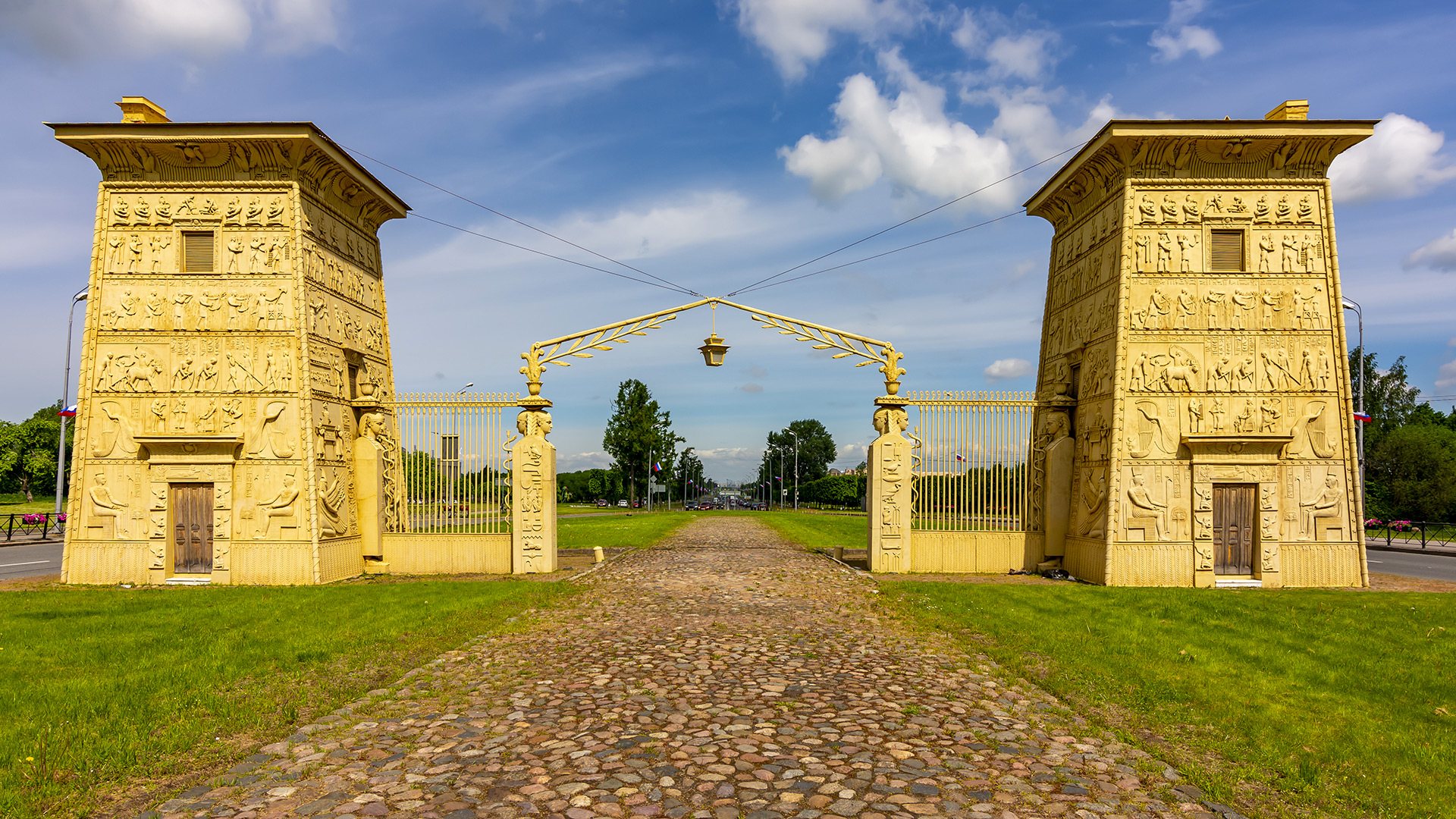
How Siberia’s Tomsk ‘weaved’ houses of wooden lace (PHOTOS)
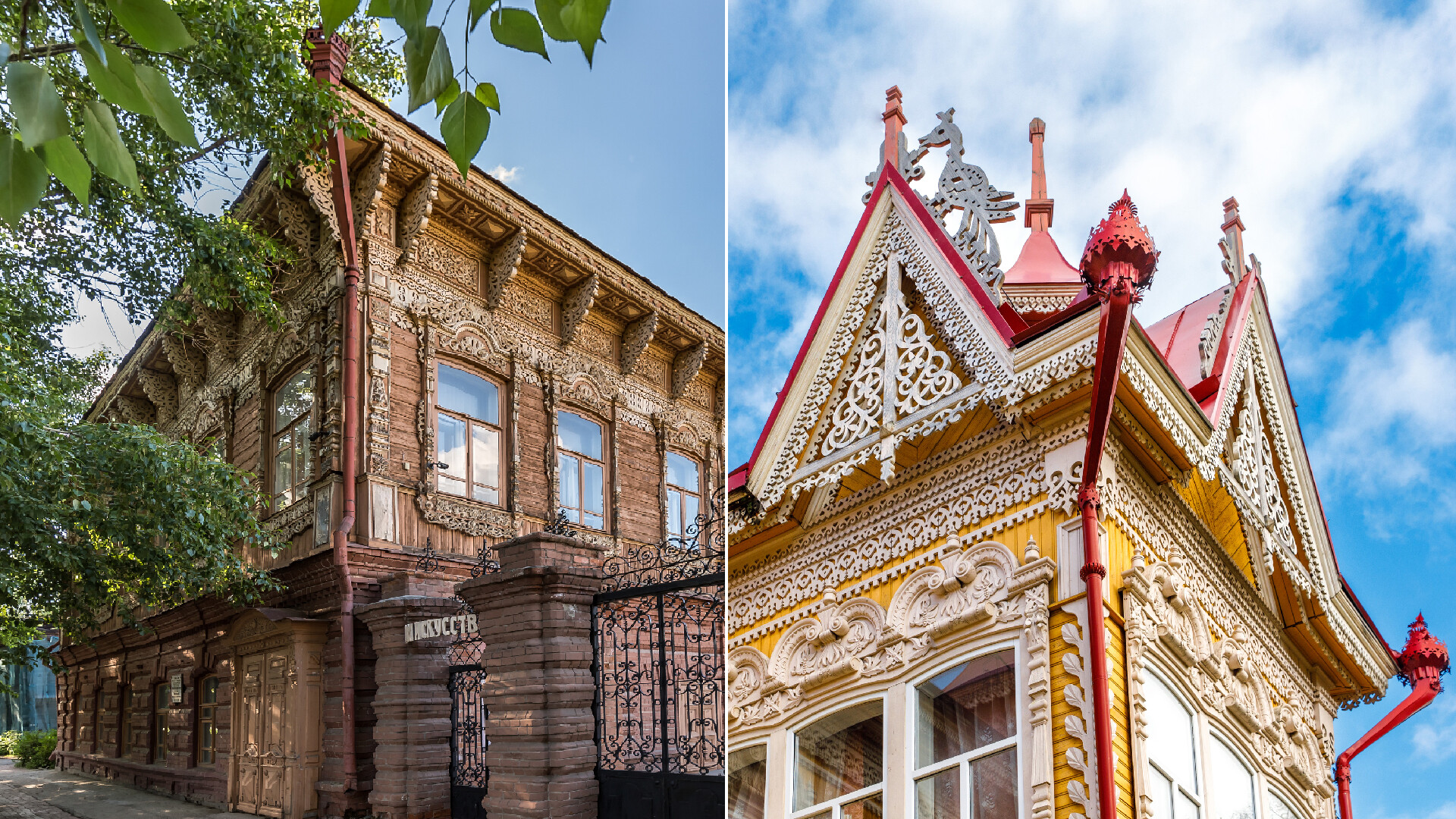
Tomsk, one of the oldest cities in Siberia, was founded in 1604. A century and a half ago, it was a major hub for transit and trade. Merchants, architects, scientists and doctors came here en masse. The city is well preserved with the old layout of the streets and wooden estates of the 19th and early 20th centuries.
How many houses have been preserved?
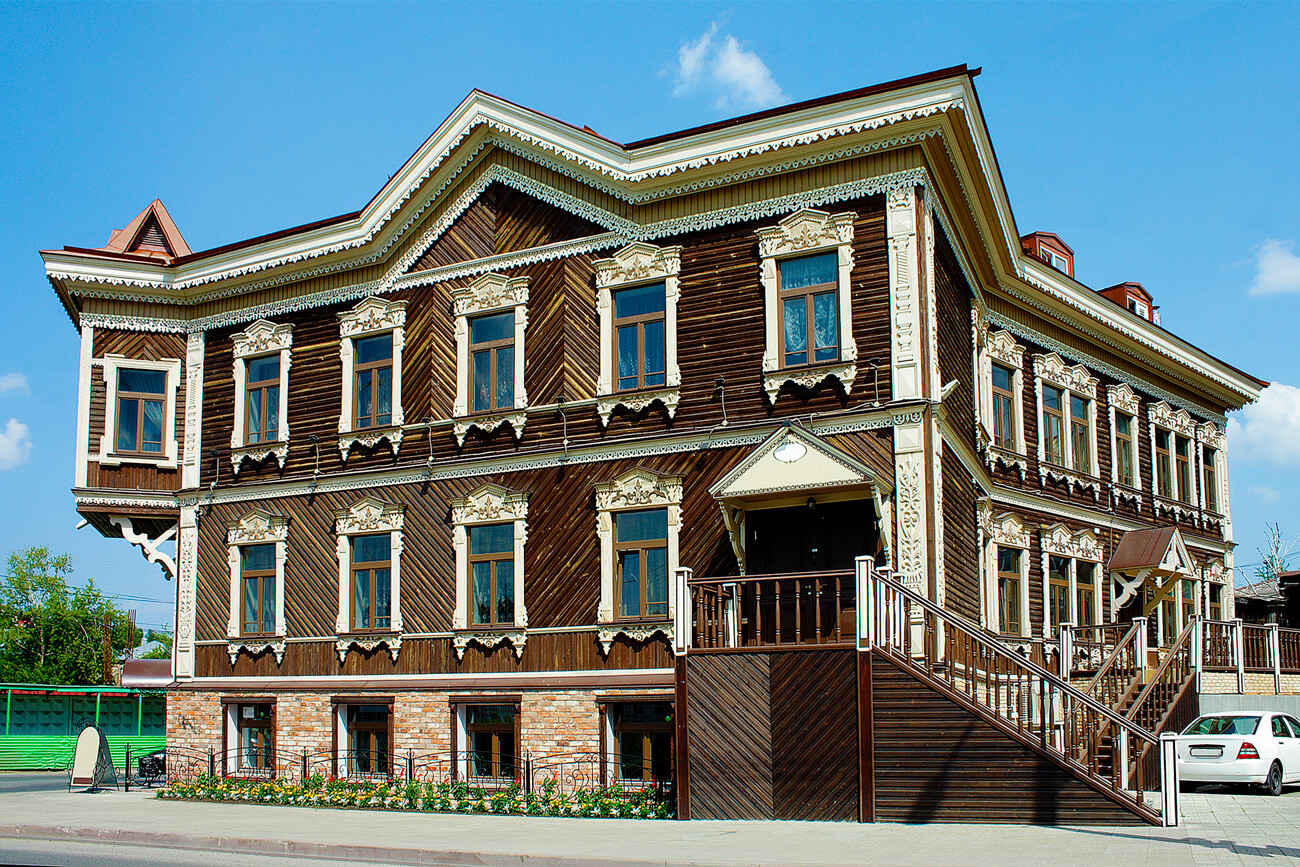 "A merchant's house" in Tomsk.
"A merchant's house" in Tomsk.
Historically, Tomsk was built up with wooden buildings, since there was always plenty of trees in Siberia. At all times, local craftsmen skillfully transformed popular styles into wooden architecture. Neo-Gothic, classicism, art Nouveau - all of these architectural styles can be seen in Tomsk made of wood.
 The carved elements around the windows.
The carved elements around the windows.
Even the wealthy locals preferred to order mansions made of wood, rather than stone. Their houses are decorated with carved gables, platbands, high spires and turrets, which is why they are dubbed “lacy”.
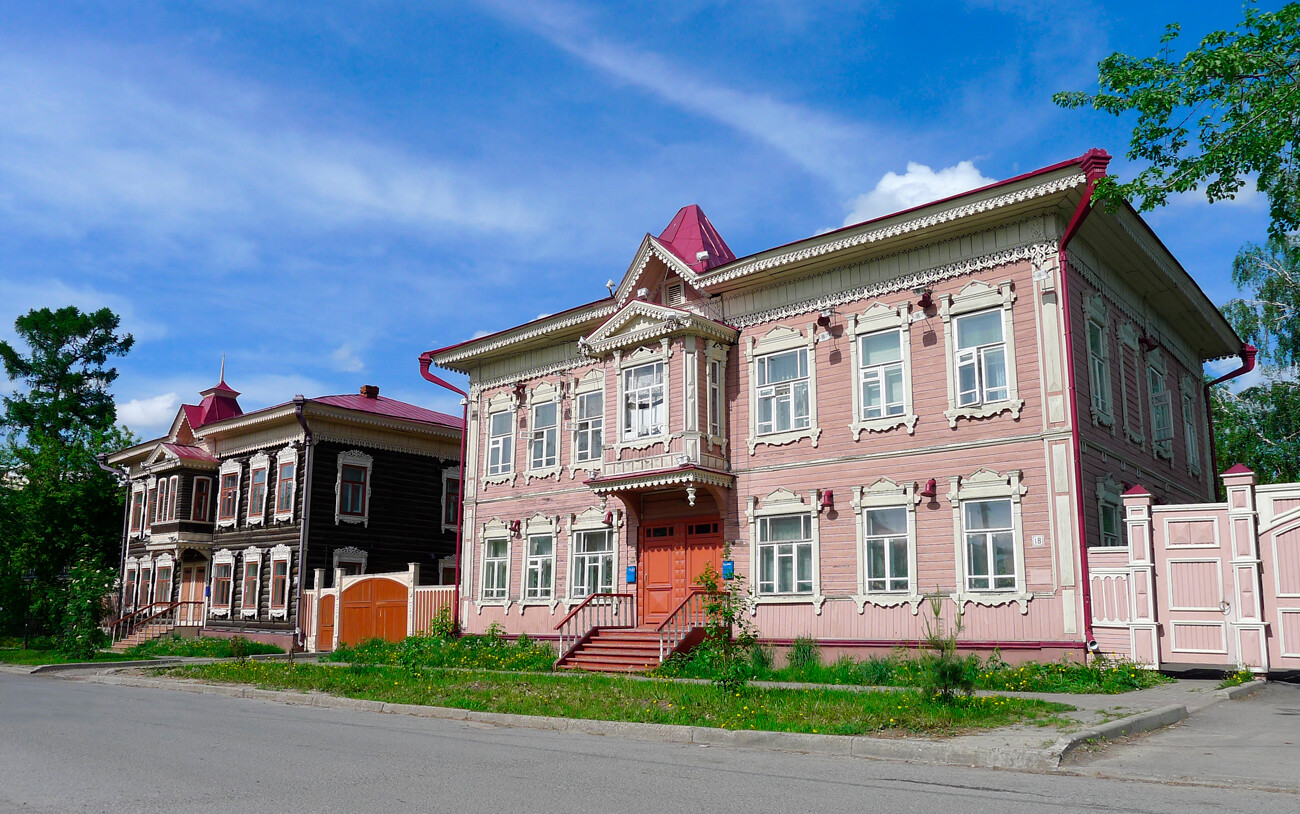 Houses in Tomsk.
Houses in Tomsk.
In addition, they stand out for their bright colors, particularly yellow, red, pink and blue. Today, in the city with a little over 550,000 people, there still remain about 2,100 wooden houses built before the Soviet era. Out of these, 701 are under the protection of the state.
The house with firebirds

One of the most outstanding buildings in Tomsk is the so-called ‘House with the Firebirds’. The firebird is a magical creature from Russian fairy tales and its image is often used in folk arts and crafts. Firebirds decorate the roof of the house. This mansion on Krasnoarmeyskaya Street was built in 1903 and belonged to the merchant Leontius Zhelyabo. He ordered its construction for his daughter as a wedding gift. Several firebirds from this house can be found in the local museum of wooden architecture. The house is now divided into apartments and several families live there.
The Emerald Mansion
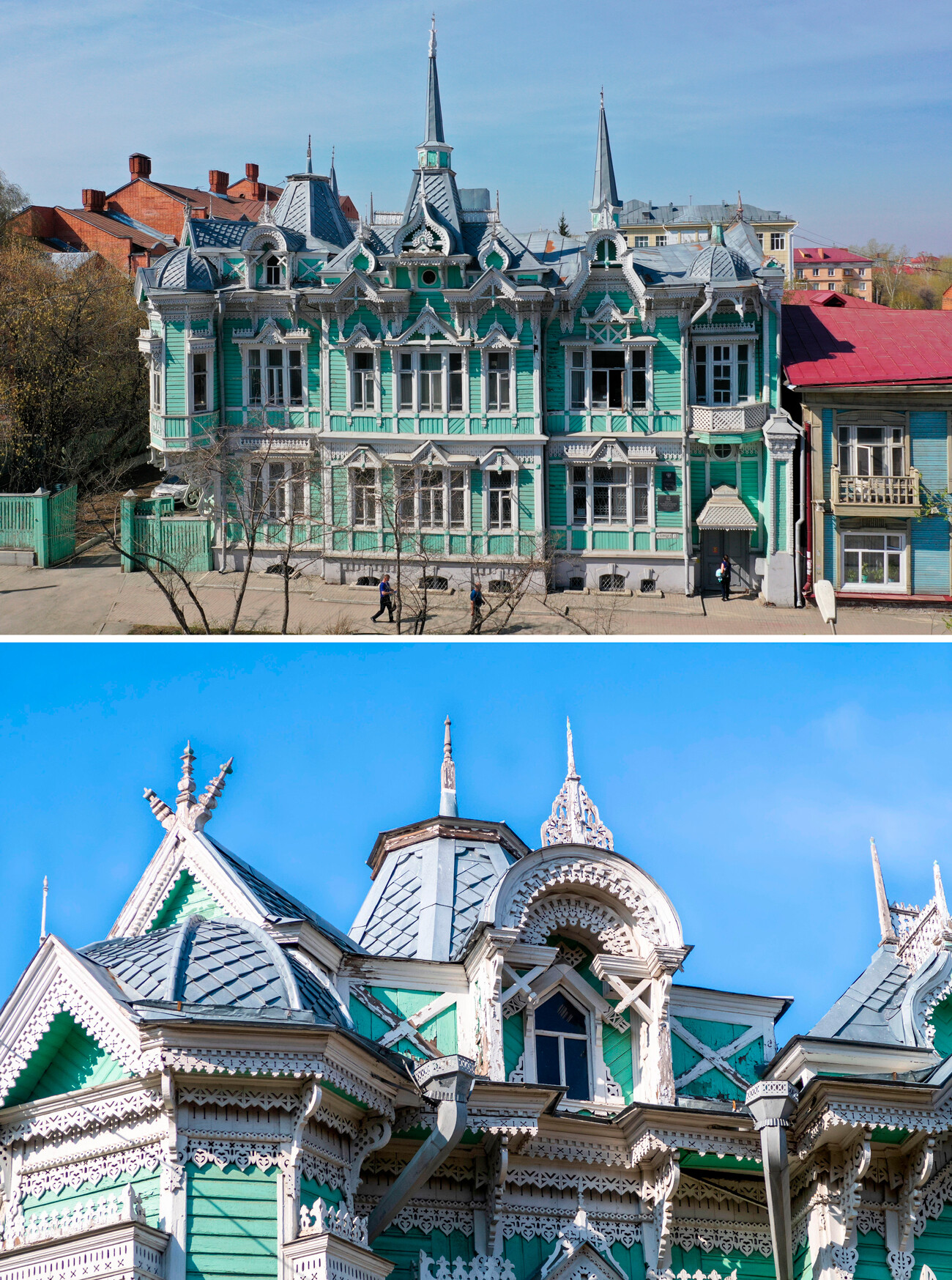
This house on Belinskogo Street looks like a fairy tale castle. It was built in 1904 by architect Stanislav Khomich for his family, as well as for rental purposes. Carved balconies, bay windows and bright emerald colors - it resembles a real castle.
The house was declared a monument of architecture in 1974. Now, it houses the Tomsk Region Licensing Department.
The house with a marquee
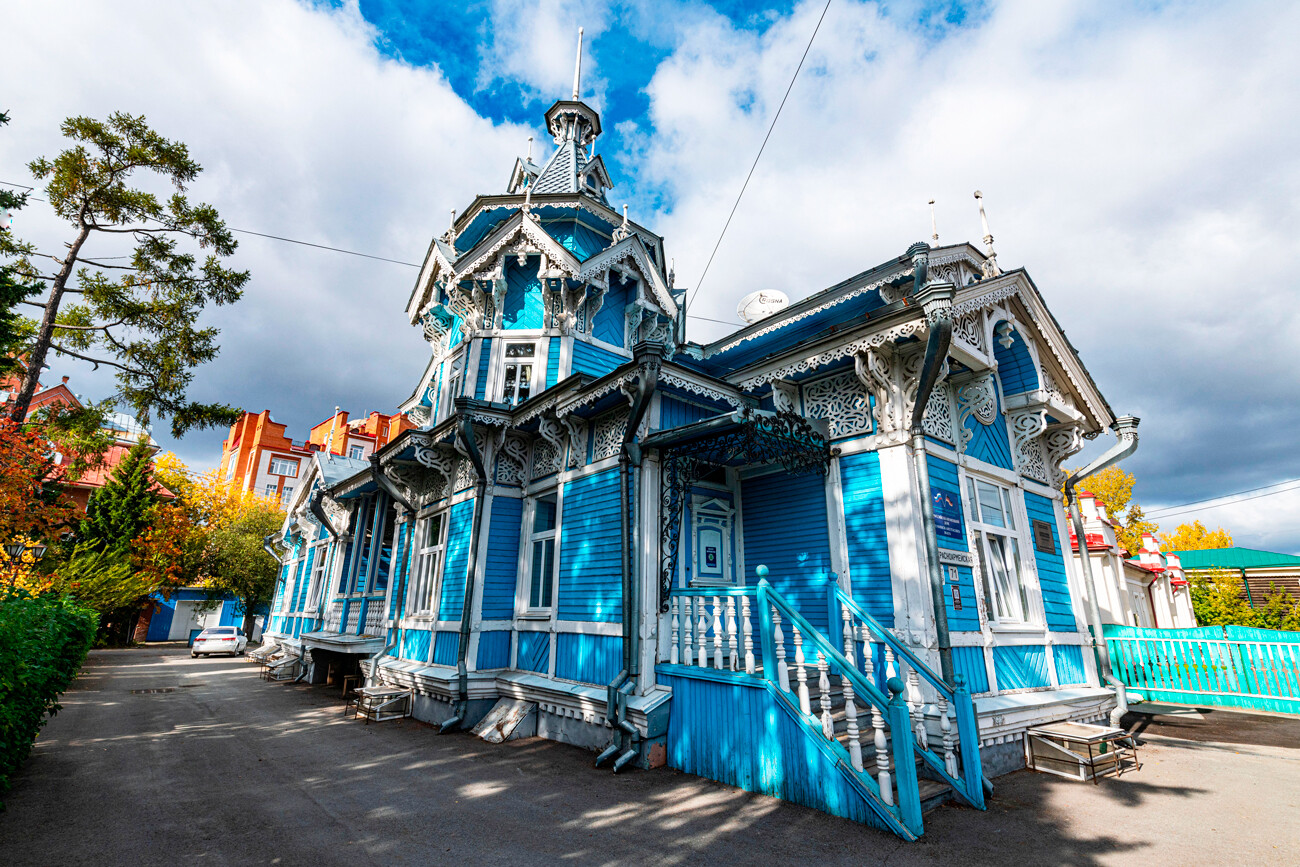
Another unusual wooden house by Stanislav Khomich. “The house with a marquee” on Krasnoarmeyskaya Street in 1902 was built for the merchant George Golovanov. Spires, marquees, towers - all decorated with carved wooden elements. Since 1995, it has been home to the Russian-German House and is open to the public.
The house with a spire
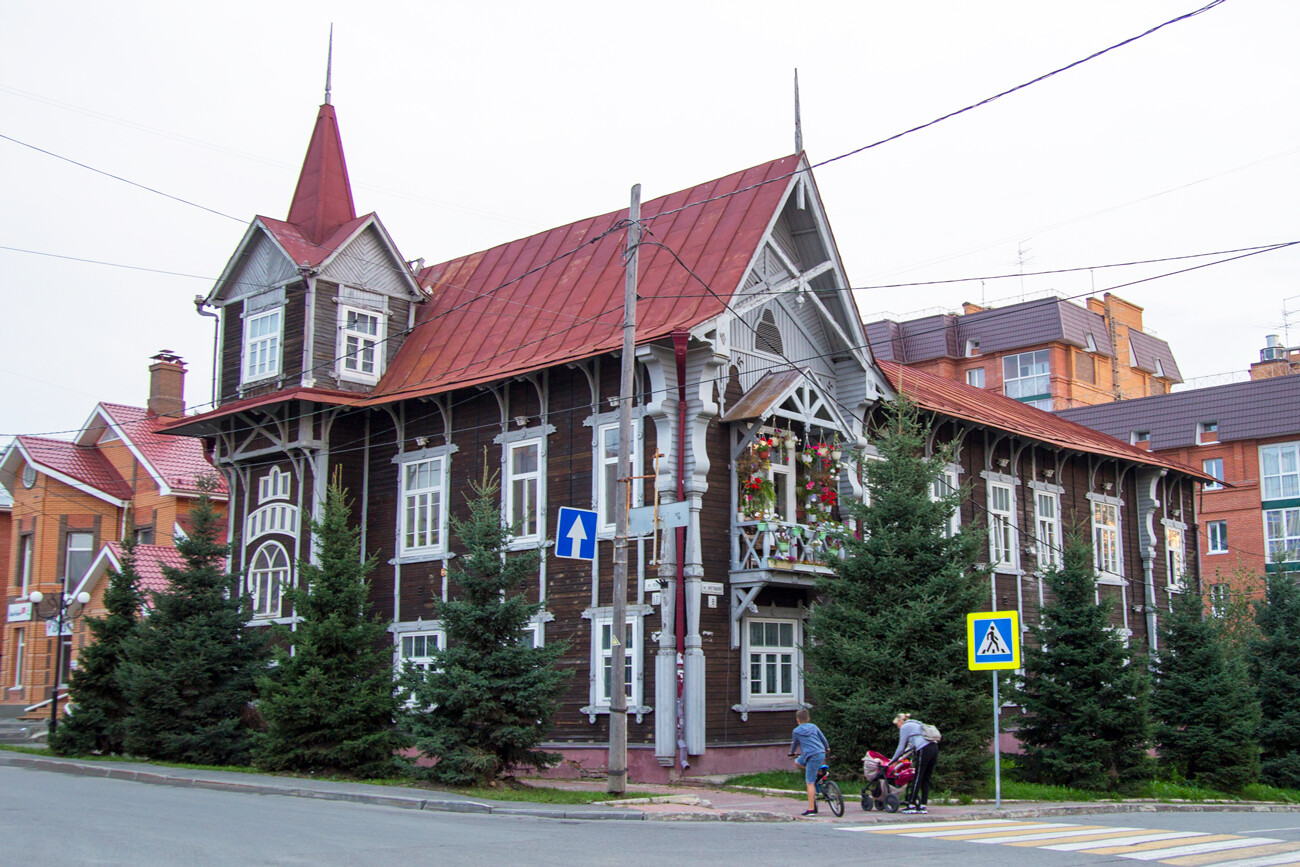
A bit of wooden neo-Gothic can be seen on Kuznetsova Street. Dr. Valerian Vasilkov and his family lived in this house which was constructed in 1908. At that time, doctors worked not only in institutions (Vasilkov, for example, was a doctor on the railroad), but also in private practices. The first floor was intended for treating patients, while the second floor was used as living quarters. After the revolution of 1917, the house became an apartment building.
The house in the Tatar Sloboda
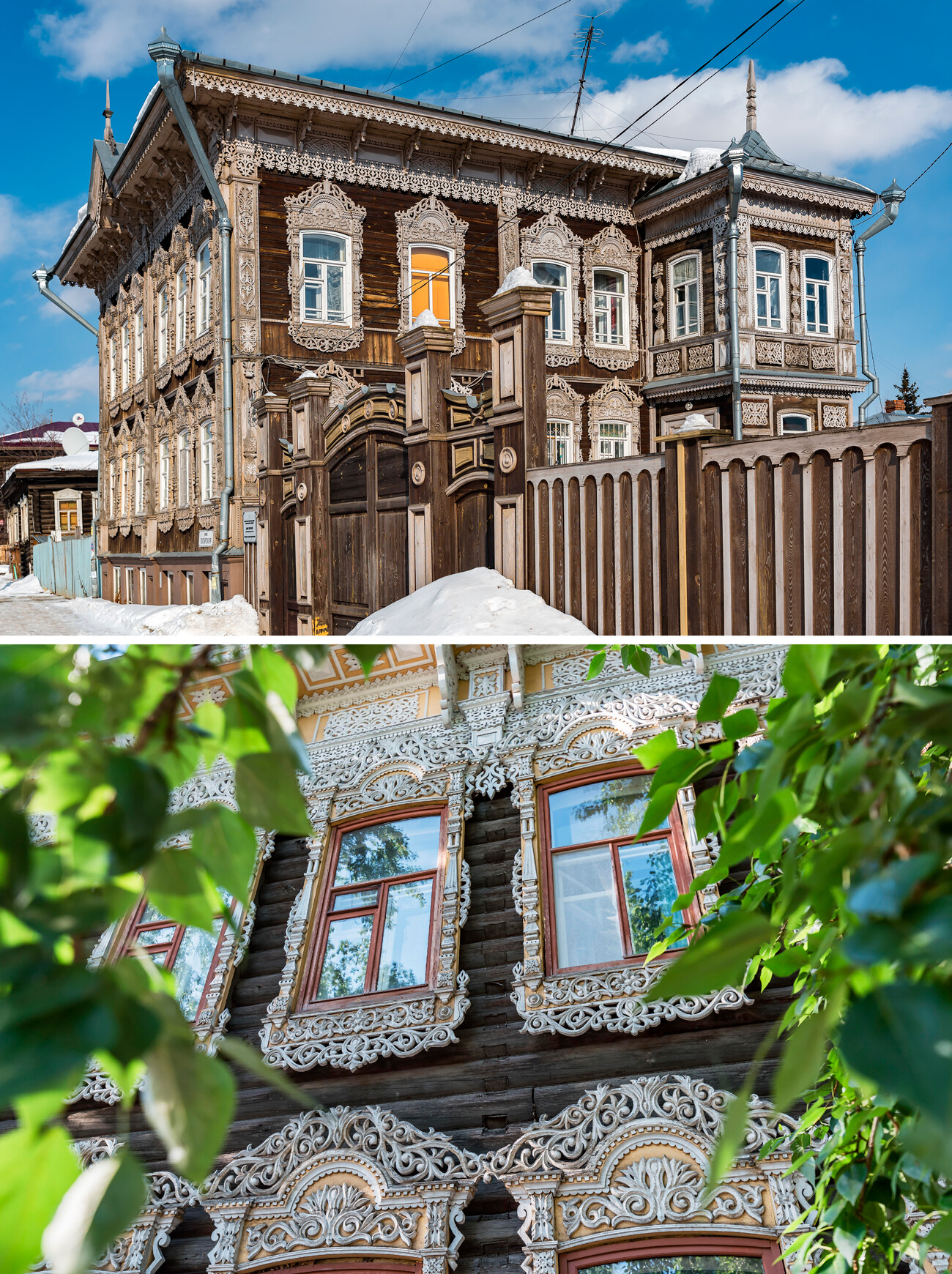
Tatars from various regions of Russia settled around the Tatarskaya Street in Tomsk. This 1902 mansion belonged to Moscow Tatar Akhmedulla Akhmetov. There is a stone basement and the upper floors are made of wood. The windows are decorated with beautiful moldings. In 2007, the house was restored and its massive gate was reinstalled. Today, it is a residential building.













